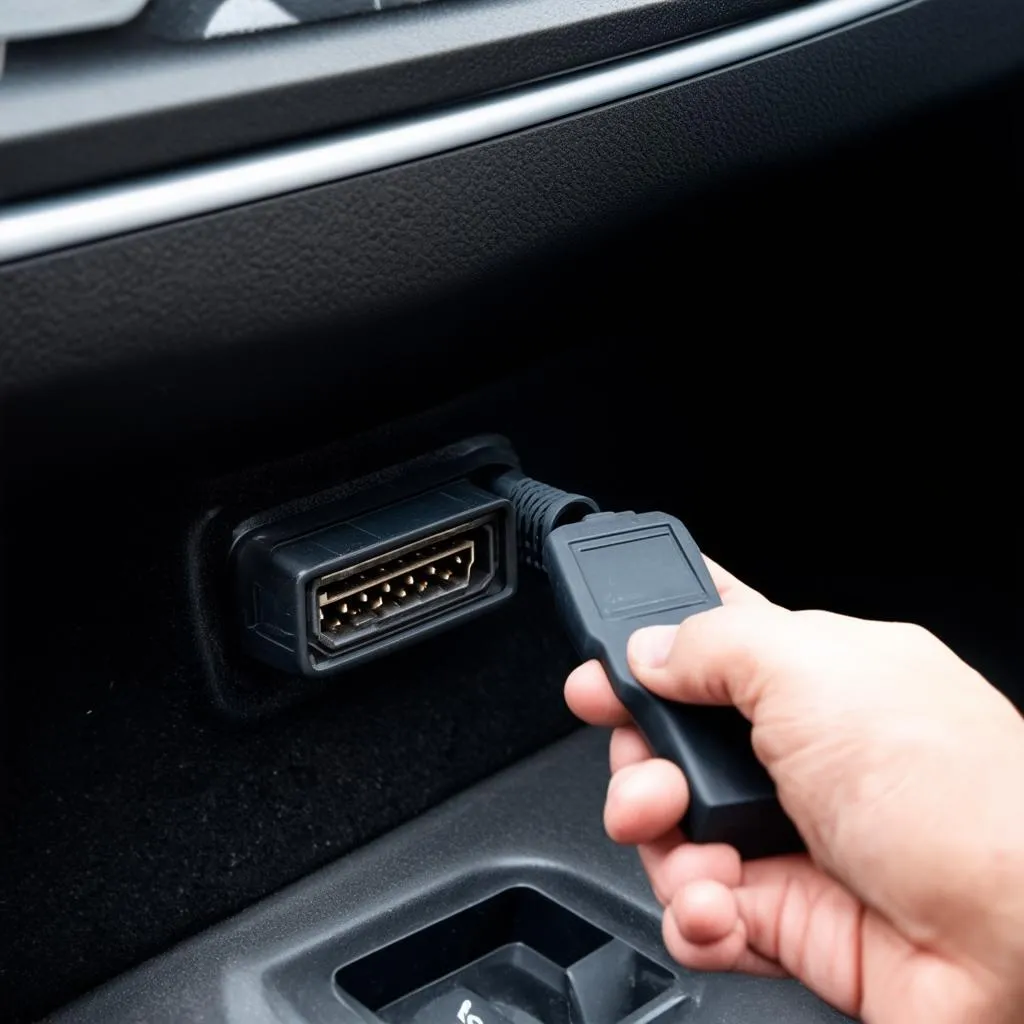You’re cruising down Highway 1 in your 2018 Hyundai Sonata, enjoying the California sunshine when suddenly, the check engine light pops on. Your heart sinks. What does it mean? Is it something serious? A wave of dread washes over you. This, my friend, is a scenario familiar to many car owners, particularly Hyundai drivers wondering, “Is Obd Ii Compatible With Hyundai?”
Decoding the Question: What Does “Is Obd Ii Compatible With Hyundai” Really Mean?
Before we answer the million-dollar question, let’s break it down.
From a mechanic’s perspective: This question screams, “Can I use a standard OBD II scanner on my Hyundai to diagnose the check engine light?”
From an automotive engineer’s perspective: This question delves into the technical compatibility of Hyundai’s onboard computer system with the standardized OBD II protocols.
From a car owner’s perspective: This boils down to, “Can I figure out what’s wrong with my Hyundai and how much it’ll cost to fix?”
The Short Answer: Yes!
All Hyundai models manufactured after 1996 are indeed OBD II compliant. This means they are equipped with an OBD II port and communicate using the standardized OBD II protocols.
Why This Matters to You
Imagine you’re in rural Montana, your 2020 Hyundai Palisade throws a curveball with an illuminated check engine light, and the nearest dealership is miles away. Knowing your Hyundai is OBD II compliant is a lifesaver. You can:
- Self-Diagnose: Use a basic OBD II scanner (easily found at auto parts stores or online) to read the error codes triggering the check engine light.
- Get an Idea of the Problem: While not as comprehensive as professional scanners, basic OBD II scanners can give you a general understanding of the issue.
- Make Informed Decisions: Armed with this information, you can decide whether to drive directly to a mechanic or if it’s something you can address later.
Real-World Scenarios: When OBD II Compatibility Saves the Day
Let’s say you’re driving your Hyundai Elantra through downtown Chicago. Suddenly, the engine starts sputtering. You pull over, connect your trusty OBD II scanner, and discover a code related to the mass airflow sensor. This information allows you to:
- Find a Reputable Mechanic: Search online for mechanics specializing in Hyundai repairs in the Chicago area, ensuring they have experience with mass airflow sensor issues.
- Negotiate Fairly: Knowing the likely culprit empowers you to discuss repair costs and options confidently, avoiding potential upselling.
Beyond the Basics: Delving Deeper into Hyundai Diagnostics
While all post-1996 Hyundais are OBD II compliant, it’s essential to understand:
- Hyundai-Specific Codes: Beyond the standard OBD II codes, Hyundai utilizes its unique set of Diagnostic Trouble Codes (DTCs).
- Advanced Diagnostics: For comprehensive diagnostics and complex repairs, professional-grade scanners designed explicitly for Hyundai vehicles are necessary. These scanners access Hyundai-specific codes and systems, providing in-depth insights.
FAQs: Addressing Common Queries About Hyundai and OBD II
Can I use any OBD II scanner on my Hyundai?
Yes, for reading standard OBD II codes. However, for Hyundai-specific codes and advanced diagnostics, you’ll need a Hyundai-compatible scanner.
Where is the OBD II port located in my Hyundai?
The OBD II port is typically located under the driver-side dashboard, near the steering column.
Can I reset the check engine light using an OBD II scanner?
Yes, most OBD II scanners offer the functionality to reset the check engine light. However, this is a temporary fix. If the underlying issue persists, the light will reappear.
 Hyundai OBD II Port
Hyundai OBD II Port
Need More Help with Your Hyundai?
We’re here to assist you on your Hyundai repair journey. If you need expert advice on diagnostic tools, software installation, or anything related to your Hyundai’s health, don’t hesitate to contact us on WhatsApp at +84767531508. Our team of automotive specialists is available 24/7 to answer your questions and guide you through the process.
Keep Exploring:
We hope this article has shed light on the world of Hyundai and OBD II compatibility. Remember, knowledge is power when it comes to car maintenance. Safe travels!